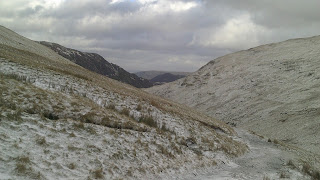For some time I have been interested in the idea that the sound of the sea at Rhosilli camp site last summer was as loud as the wind turbine at Kessingland. So I've been out with my deciBel meter. Trouble was the sea was very calm when we went to Silloth. I went right down to the edge of the sea.
66 dB is about as loud as a conversation.
You couldn't even see the sea up in the car park. It suggests the sea was as loud as a refrigerator hum or even rustling leaves. It was louder at Rhosilli!













